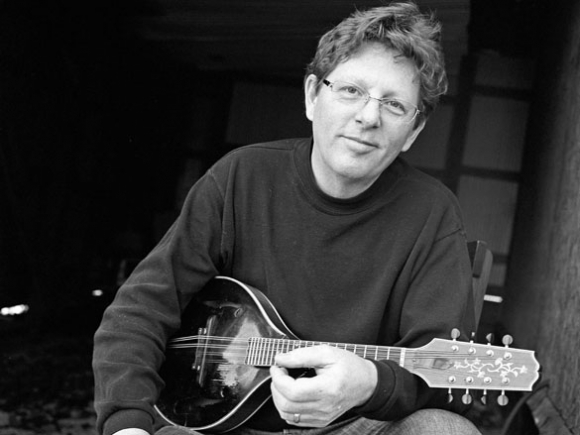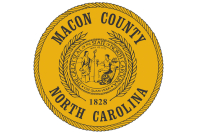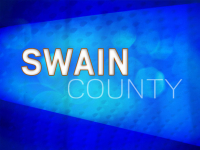No way to stop the flow: A conversation with Tim O’Brien

In the annals of bluegrass history, the chapter on multi-instrumentalist Tim O’Brien is not only long and bountiful, it’s also ongoing — a continual evolution of string music and melodic exploration. O’Brien hails from Wheeling, West Virginia, home of the WWVA Jamboree, which — since 1933 — is one of the most popular country and variety radio programs, second in longevity after the “Grand Ole Opry.”
As a teenager, O’Brien dropped out of college in 1973 and hit the road with dreams of becoming a professional musician. By the late 1970s, he ended up in Colorado, forming the groundbreaking newgrass act Hot Rize (which won the first International Bluegrass Music Association award for “Entertainer of the Year” in 1990).
And though the group still performs semi-regularly, O’Brien himself has found footing over the last few decades as a Grammy-winning solo artist (and IBMA “Male Vocalist of the Year” in 1993 and 2006), one whose output and rigorous touring schedule has brought him into the upper echelon of that “high, lonesome sound.”
Garret K. Woodward: What do you see right now with bluegrass music? What is it right now, where is it going?
Tim O’Brien: Bluegrass is holding onto its roots pretty strong. And I think there’s a real value in that. But, it’s never been a big genre, and it’s kind of designed not to be big. It’s kind of designed not to be so popular that it’s uncool. I think a lot of people just don’t want it to be too popular. They like the “small town” of it. So, I think it’s staying that way, I think it will stay that way. Meanwhile, the stuff around the nucleus of that old-time bluegrass — the progressive stuff — is kind of growing and it’s another genre unto itself in a way. Stuff like The Punch Brothers, they have a toehold in bluegrass appreciation among the audience, but they don’t count on that for their livelihood. It’s going to happen — the music will evolve. The funny thing with like the Grammys and radio format, is that they try their best to sort of say, “this is a genre that is ‘X’,” and meanwhile everything is happening to break down walls between the borders they put up. It’s like Trump trying to build a wall, you’re not going to be successful with that — it’s just doesn’t happen. People get over the wall, they get underneath it, they get around it.
GKW: What is it about bluegrass that really sets it apart from other genres for you?
Related Items
TO: Well, you know, the part that I like about bluegrass — to me — is the community. You can sort of develop your art on your own terms and people respond to it. I mean, I don’t shock the system too much. I still play primarily acoustic, I suppose it’s fairly country-oriented stuff. But, I can sort of wiggle a lot in there and not feel like I’m going to lose an audience. I’ve built an audience based on my sort of diversity that’s rewarded — slowly. I mean, there hasn’t been like a big surge ever, slowly but surely you’re able to make a toehold and make a career.
GKW: Peter Rowan always said to me, too, that Bill [Monroe] had told him that if you could play bluegrass, you could play anything…
TO: Bill Monroe was right. Bluegrass is a great training ground. The people that play bluegrass can play rock-n-roll, but sometimes the people that play rock-n-roll can’t play bluegrass. The jazzers can’t play bluegrass, but the bluegrassers can sometimes play jazz. I don’t know — it’s not that easy. But, there is a lot of technical facility in bluegrass that is required, and that enables you to work in other genres a little more easily, I think.
GKW: Well, you can’t hide behind anything. It’s just you, the instrument — and that’s it — and if you can’t play, get off the stage…
TO: That’s right, yeah. [Laughs].
GKW: Growing up the 1960s, you were in West Virginia at a real crucial time and high-water mark for country and bluegrass. As you became a teenager in the late 60s/early 70s, on the national scale bluegrass would have — at least radio-wise — seemed like outer space. What was it about [bluegrass] that you came back to it, or that it was always the path instead of rock-n-roll or something else?
TO: Ironically, I think there was an infrastructure that had emerged by that time. With the festivals around the country, every community sort of had a bluegrass association that promotes people learning the music as well as local concerts, and they interfaced with the growing National Public Radio hookups, statewide hookups. There was a lot more airplay, actually, for bluegrass, and the people were able to pinpoint where to find it as the mid-70s came along. And we just waltzed into that. Pete Wernick of Hot Rize had a little bit of a national reputation and we were sort of able to link up. Everybody was studying this, but it was there. There was this circuit you could build, in the winter and in the summertime. There was a magazine and there was a little bit of radio airplay — it was good.
GKW: When I’ve talked to other folks that came up at that time — John Cowan (New Grass Revival) or John McEuen (Nitty Gritty Dirt Band) — they said it was almost like when everyone else was focused on rock-n-roll or folk music, that they just kind of fell into this whole new world, that they either didn’t know existed or had enough of a space where they could actually stand out.
TO: McEuen, those guys hit gold. They were doing some good stuff and getting some notice, and then they went, “Oh, let’s look at country music and bluegrass and do a collaboration.” That [“Will the Circle be Unbroken”] record was a like a watershed moment where all the hippies said, “Oh, this is cool.” They did their part to pave the way for someone like me, as well. And Old & In The Way. Before that a few movie things and TV things that sort of keep bluegrass going. We keep referring back to the classic stuff. It’s just like fashion — it goes in and out, it gets outrageous, it goes to a traditional view again, and then it goes back. And bluegrass is this kind of this solid rock that informs everything in American music. That’s why the blues, bluegrass, and traditional jazz, won’t go away.
GKW: What does [bluegrass] mean to you now that you’ve spent a good portion of your life exploring this genre?
TO: You know, you’re a product of what you’ve done. I’ve learned about the rest of the world by learning about the community within bluegrass. I’ve traveled the world. The music itself — and the history of it — is fascinating.
GKW: Where do you go in your head when everything is firing on all cylinders [onstage]?
TO: Man, I’m just hearing some kind of a thing. It’s like Mother Nature making trees, sprouting seeds or something. You’re playing this music and it’s kind of moving through you and you’re part of this thing that’s “create-dipity.” It’s all around us. Everybody longs for those moments when you’re inside and part of something. You can feel something happening. That’s the great reward — that’s where I go.
Want to go?
The Jam In The Trees festival will take place Aug. 25-26 at Pisgah Brewing in Black Mountain.
The lineup includes Tim O’Brien & Jan Fabricius, The Infamous Stringdusters, Acoustic Syndicate, Peter Rowan, Larry Keel Experience, Jim Lauderdale, Frank Solivan & Dirty Kitchen, and more.
Tickets start at $25. There are two-day and VIP passes also available. For more information or to purchase tickets, visit www.jaminthetrees.com.









